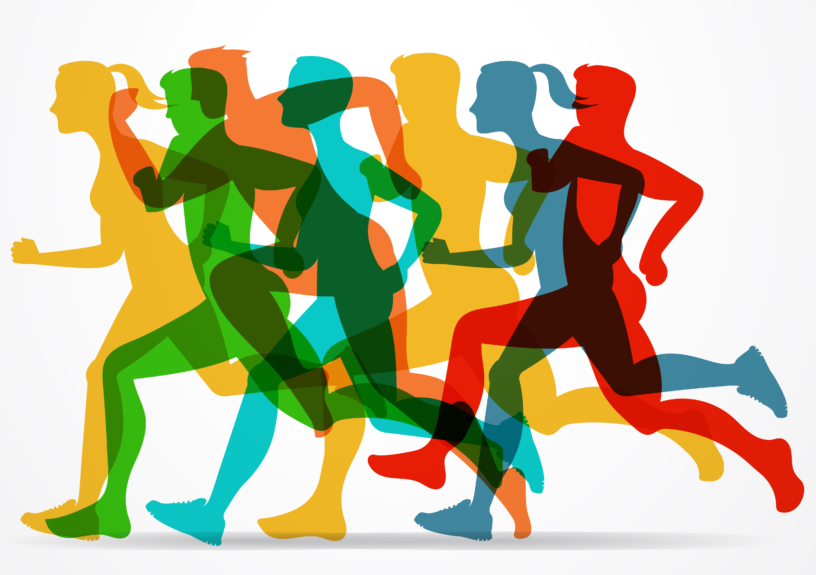One of the most frequent questions we hear is “How do I compare to other runners.” Answering that question is more complicated than you’d think. For two runs or runners you’d like to objectively compare, it’s important that the pace and terrain are identical, otherwise you might as well be comparing apples to oranges. Our bodies naturally adapt, and your mechanics will change if you are running on a hard surface (like a road) or a soft surface (such as a dirt path). Everything about running, from stride rate to footstrike type, can also change as you speed up or slow down, to varying degrees. To demonstrate the pace dependency of metrics, let’s look at a group of runners doing the same workout.
The Workout:
The group did 6×800 m repetitions wearing their normal training shoes, with a target 800 time of 2:35-2:40. The group came through each 800 at the nearly the same split (+/- 2 seconds), and then jogged 400 meters to recover. The group got progressively faster as the workout went on, starting at 2:45 (5:30 mile pace) and ending the final 800 under 2:30 (5:00 mile pace).
The Data:
As the intervals got faster, each runner decreased their contact time and increased their stride rate, and it’s clear to see that these metrics are pace dependent. The six intervals cover only a 30 second range of pace, contact time decreased an average of 7%, while stride rate increased 4% from the slowest to the fastest interval.



Discussion:
Stride rate and contact time are often regarded as having some optimal value or target for peak performance, and it’s often assumed that an increase in stride rate will result in a decrease in contact time. However a faster cadence doesn’t always mean less ground contact time for everyone. Not all runners have the same CT at the same cadence, and as cadence increases not all runners decrease CT at the same rate. As an example, from start to finish, Mike decreased his contact time by 20 ms, or 10%, while Sam decreased his contact time by 10 ms, or 4.6%. Mike decreased his contact time by a substantially larger amount than Sam, but both runners increased their stride rate close to the same amount (7.8 step/min increase for Mike, 8.9 step/min increase for Sam).
For this workout, because each athlete runs each 800 at the same pace and on the same surface, it’s possible to objectively see the differences between each runner. For simplicity, let’s look at two runners, Mike and Tom, who have similar anthropometrics, training, and race times. While Tom has an average cadence of 190 and a CT of 212, Mike has a lower cadence of 185, but a shorter contact time of 201. So for two runners who are so similar, what makes for the differences in CT and SR? Mike’s moderate SR and short CT means he spends more time in the air ‘flying’ than Tom, who has a high SR and longer CT.
A metric that makes the difference in running cadence and contact time between runners more clear is flight ratio. Flight ratio is the ratio of flight time (time spent in the air) compared to cycle time (time spent in the air + contact time). The Flight Ratio plot shows each runner’s flight time for the workout. Mike has a high flight ratio between .35 and .40 for the workout, while Tom varies between .30 and .35. Flight ratio condenses the SR and CT info in one metric so it’s possible to see the different running strategies of each athlete with one number.
Looking at the additional RS data, you can see some reasons why the two running forms are different. Mike is a forefoot strike, and Tom is a midfoot/moderate heel striker. One reason could be that Mike has the leg strength to generate more force per step in a shorter amount of time, so he can “fly” longer between steps, or maybe he has naturally adopted the forefoot style because it allows him to utilize more elastic energy from the feet and leg muscles/tendons through the stretch shortening cycle. Tom achieves the same result in speed with an increased SR, and therefore less time ‘flying’ as can be seen with his lower flight ratio.
There are many ways to hit the target interval time, and each runner adapts their own running form to best suit their own strengths and weaknesses.
Eileen Schweiss, RunScribe Research

